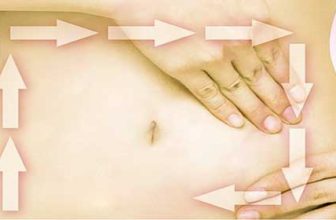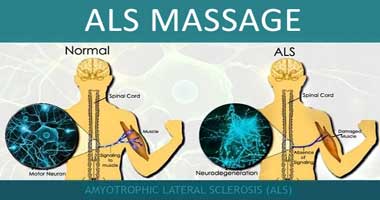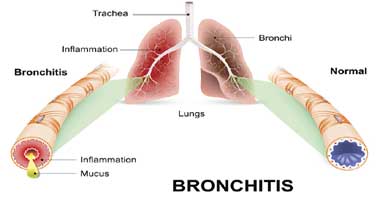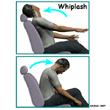
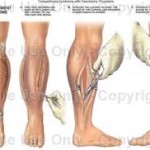 A compartment syndrome is the result of an increase in pressure within the compartments of the lower leg.
A compartment syndrome is the result of an increase in pressure within the compartments of the lower leg.
The 4 compartments in the Lower Leg:
- ANTERIOR COMPARTMENT: contains tibialis anterior , extensor hallucis longus, extensor digitorum,anterior tibial artery, and vein, deep peroneal nerve. (Can be caused by tightness in the gastrocs/soleus)
- SUPERFICIAL POSTERIOR COMPARTMENT: gastrocs and soleus
- DEEP POSTERIOR COMPARTMENT: tibialis posterior, flexor digitorum longus, flexor hallucis longus, posterior tibial artery, vein, and nerve, peroneal artery and vein
- LATERAL COMPARTMENT: peroneus longus, brevis
* (divided by dense, inelastic fascia)
* Any of the compartments may be affected, but anterior compartment is more prone ( about 45%)
* Deep posterior compartment syndrome is common as well.
Compartment Syndrome Massage
CAUSES:
- Acute Compartment Syndrome – trauma, such as direct blow to the compartment ( medical emergency)
- Chronic Compartment Syndrome – overuse due to overtraining, poor technique or training on hard surfaces
- Predisposing factors:
- Anatomical — affected compartment is smaller than normal
- Muscle imbalances/ tightness — usually in antagonists ( ie- tight gastrocs/ soleus can cause anterior compartment syndrome due to strain on anterior compartment muscles)
- Improper footwear — worn out, no arch support
- Muscle type creating imbalance — tibialis anterior is phasic muscle, gastrocs/soleus are postural muscles.( one is strong and doesn’t fatigue as much while the other one fatigues faster so causes imbalance)
Compartment Syndrome
MEDICAL TREATMENT:
- Acute compartment syndrome is treated with an immediate fasciotomy — a surgical procedure where fascia is cut to relieve pressure or tension.
- Chronic compartment syndrome can be treated conservatively with rest and stretching. If this fails, fasciotomy is performed.
Compartment Syndrome Massage
Compartment Syndrome Symptoms:
1. Acute Compartment Syndrome
- Is a medical emergency. Bleeding/ swelling within unyielding compartment increases pressure. Pressure may increase to a point where nerve and arteries are compressed. Permanent damage and muscle necrosis may result if fasciatomy is not performed
- Pain is severe and persistent
- Skin taut and shiny
- Affected compartment hot and harder than unaffected side
- Sensation may diminish distal
- AF dorsiflexion, extension ( toes) and inversion difficult due to pain. Passive stretch of affected compartment is painful.
2. Chronic Compartment Syndrome
- Symptoms felt with exercise. Pain begins with activity and relieved by rest
- Increased blood flow into muscle during exercise increases their size and therefore, pressure within compartment
- Ache and tightness over entire compartment
- Parasthesia in leg and foot with exercise
Compartment Syndrome Massage CONTRAINDICATIONS:
- No frictions with anti inflammatories
- A client with acute compartment syndrome is immediately referred for medical attention.
Compartment Syndrome Massage
ASSESSMENT: (chronic compartment syndrome)
- acute compartment syndrome – refer to a medical doctor
- Rom testing- restricted by pain. With anterior compartment syndrome, pain will be on active dorsiflexion and passive plantarflexion
- Length tests — often short antagonists. With anterior compartment syndrome, gastrocs and soleus are short
- Palpation of affected compartment may reveal tightness and defects in the fascia from continued pressure.
- Tibialis posterior Tendinitis ( plantarflex and inversion) — pain will be along the course of the tendon, just posterior to medial malleolus. AR testing for tendonitis is (+)
- Tibial Stress Fracture — pain is sharp and local to fracture site. Pain becomes constant and worse with impact.
- DVT — local tenderness in calf. Homan’s/Ramirez test (+)
Compartment Syndrome Massage Therapy Treatment
Massage Treatment: ( CHRONIC Compartment Syndrome)
- refer to an MD if acute compartment syndrome – no massage
- Work to compensating structures — low back, gluteals, thighs
- Fascial techniques, passive stretching are used to elongate short, thick fascia. Start with antagonists
- Short gastrocs/ soleus are treated with fascial techniques, interspersed with stretching
- Supine, quads and aductors treatment, especially Trigger points that refer to anterior leg
- Longitudinal fascial techniques to anterior compartment to loosen fascia and reduce pressure. Passive plantarflexion to stretch
- Any adhesions in tibialis anterior treated with cross fiber frictions
- Effleurage and petrissage to entire limb ( toward heart)
Compartment Syndrome Massage
SELF CARE:
- Patient rests from activities causing pain
- Proper warm up period may help to reduce rapid bloodflow to compartment
- Self massage to compartment borders
- Stretching the muscles of lower leg starts with antagonists, then progress to affected area
- Patient may need orthotics.
